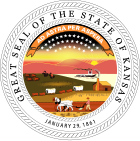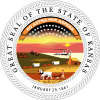The Virginia Department of Wildlife Resources is a department of the government of the U.S. state of Virginia that regulates wildlife conservation.

The Kentucky Department of Fish and Wildlife Resources, an agency of the Kentucky Tourism, Arts and Heritage Cabinet, is responsible for the conservation of wildlife resources and for boating projects in the state. A commissioner appointed by the Fish and Wildlife Commission heads the department. The commission—which oversees the department's commissioner and promulgates regulations governing fishing, hunting, and boating—is a nine-member bipartisan board appointed by the governor from a list of candidates nominated by active hunters and anglers in each of nine geographic districts in the state.

The Texas Parks & Wildlife Department (TPWD) is a Texas state agency that oversees and protects wildlife and their habitats. In addition, the agency is responsible for managing the state's parks and historical areas. Its mission is to manage and conserve the natural and cultural resources of Texas and to provide hunting, fishing, and outdoor recreation opportunities for the use and enjoyment of present and future generations.

The Oregon State Police (OSP) is a law enforcement agency of the U.S. state of Oregon. The OSP enforces all of Oregon's criminal laws and assists local law enforcement agencies. Casey Codding has served as Superintendent since February 2023. The agency differs from other state police highway patrol agencies in that OSP has many other areas of specialization and responsibility. In addition to the Patrol Division, OSP has a Criminal Division, SWAT, DPU, MRT, a Forensic Services Division, a Fish and Wildlife Division, a Medical Examiner's Division, an Oregon State Fire Marshal Division, and it is one of the few law enforcement agencies in the United States that monitors the security of the state lottery. Oregon State Police has primary jurisdiction on state highways and all other state owned property. It also frequently responds to incidents in rural areas when local agencies lack capacity or otherwise require assistance.

The South Carolina Department of Natural Resources (DNR) is a South Carolina state agency charged with regulating hunting, fishing, boating, duck stamp orders, and the conservation efforts of the state government.

The California Department of Fish and Wildlife (CDFW), formerly known as the California Department of Fish and Game (CDFG), is a state agency under the California Natural Resources Agency. The Department of Fish and Wildlife manages and protects the state's wildlife, wildflowers, trees, mushrooms, algae and native habitats (ecosystems). The department is responsible for regulatory enforcement and management of related recreational, commercial, scientific, and educational uses. The department also prevents illegal poaching.

A conservation officer is a law enforcement officer who protects wildlife and the environment. A conservation officer may also be referred to as an environmental technician/technologist, game warden, park ranger, forest watcher, forest guard, forester, gamekeeper, investigator, wildernessofficer, wildlifeofficer, or wildlife trooper.

The Maryland Natural Resources Police (NRP) is the law enforcement arm of the Maryland Department of Natural Resources (DNR), tasked with enforcing laws on the state's public lands and waterways, protecting fish and wildlife, and leading search and rescue efforts. The Natural Resources Police is also the state's maritime homeland security agency.

The North American Game Warden Museum is a museum in the International Peace Garden on the Canada–United States international border between the Canadian province of Manitoba and the U.S. state of North Dakota. The museum is located on the American side of the border. Initially founded on a temporary basis at the International Peace Garden in the 1990s, it became a permanent museum in 2005.

Keith Sebelius Lake, formerly known as Norton Reservoir, is a man-made reservoir on Prairie Dog Creek in northwest Kansas. Built and managed by the U.S. Bureau of Reclamation, it is used for flood control, irrigation, recreation, and local water supply. Prairie Dog State Park is located on its shore.

The Montana Department of Fish, Wildlife and Parks (MFWP) is a government agency in the executive branch state of Montana in the United States with responsibility for protecting sustainable fish, wildlife, and state-owned park resources in Montana for the purpose of providing recreational activities. The agency engages in law enforcement activities to enforce laws and regulations regarding fish, wildlife, and state parks, and encourages safe recreational use of these resources.

The Massachusetts Environmental Police is a Massachusetts, US, state government law enforcement agency, which is the primary enforcement agency of Massachusetts's boating and recreation vehicle laws and regulations and is responsible for registering boats, off-highway vehicles and snowmobiles in Massachusetts. The agency is also responsible for the enforcement of fish and game laws, including commercial and recreational harvesting of the living marine resources along the state's coastline.
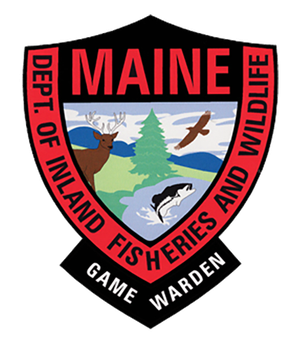
The Maine Warden Service is a police agency in the United States State of Maine responsible for the enforcement of fisheries and wildlife laws, and the coordination of search and rescue in wilderness areas of the state. Maine's game wardens strive to protect the state's fishing and hunting resources, Enforcing strict limits on the activities listed above to keep animal populations stable. Maine's Warden Service is operationally part of Maine's Department of Inland Fisheries and Wildlife, it is the oldest conservation law enforcement agency in the United States.
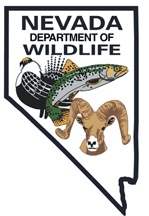
The Nevada Department of Wildlife (NDOW) is the state agency responsible for the restoration and management of fish and wildlife resources, and the promotion of boating safety on Nevada’s waters. NDOW has responsibility for the wildlife resources and enforcement of the wildlife and boating safety laws on 109,894 square miles (284,620 km2) of land, 667 square miles (1,730 km2) of water and 529 streams that flow 2,750 miles (4,430 km). NDOW's eleven state-owned wildlife management areas provide approximately 117,000 acres (47,000 ha) of wildlife habitat.
McPherson Valley Wetlands are a disconnected chain of marshes, wetlands, and shallow lakes in McPherson County, Kansas. Once covering a much larger area, 4,455 acres of the wetlands and surrounding prairie was protected by the Kansas Department of Wildlife, Parks, and Tourism as of 2011.

The South Dakota Department of Game, Fish, and Parks (GFP) is the U.S. State of South Dakota's state agency charged with the management of the state's public recreational and outdoor resources. The GFP manages the 13 state parks and 43 state recreation areas within the state parks system, totaling over 96,000 acres of public lands. The agency manages the hunting of game and the state's fisheries, manages several wildlife management areas and game production areas to restore or establish habitat for a variety of species. The agency conducts public outdoor education programs, typically focusing on hunting and boating safety. The department issues hunting and fishing licenses along with issuance of boat registrations. The agency is also charged with enforcement of fish and game laws, including invasive species regulations. The agency is headquartered in Pierre, South Dakota.
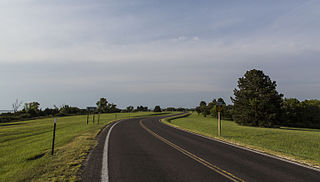
Milford State Park is located northwest of Junction City, Kansas, United States, on the southeast shore of Milford Reservoir, the largest lake in Kansas. The lake is formed by Milford Dam. The park is used by anglers seeking walleye, crappie, large mouth bass, white bass, catfish, and small mouth bass as well as for wildlife photography and game hunters. Area game include quail, pheasant, prairie chicken, duck, goose, rabbit, turkey, deer, and squirrel while trappers pursue raccoon, muskrat, and beaver. There are 19,000 acres of public land around the park and the 1,100 acres Steve Lloyd refuge, Milford Nature Center, and the Milford Fish Hatchery are nearby.

The Wyoming Game and Fish Department is the State of Wyoming's state agency charged with stewardship of the state's fish, game, and wildlife resources. The department sets fish and game regulations, including issuance of hunting and fishing licenses and enforcement of state regulations throughout the state. The department also enforces watercraft regulations and registration, along with enforcement of invasive species laws. The agency is headquartered in Cheyenne.
The North Dakota Game and Fish Department is the State of North Dakota's State agency charged with stewardship of the state's fish, game, and wildlife resources. The department sets fish and game regulations, including issuance of hunting and fishing licenses and enforcement of state regulations throughout the state. The department also enforces watercraft regulations and registration, along with enforcement of Invasive species laws.
